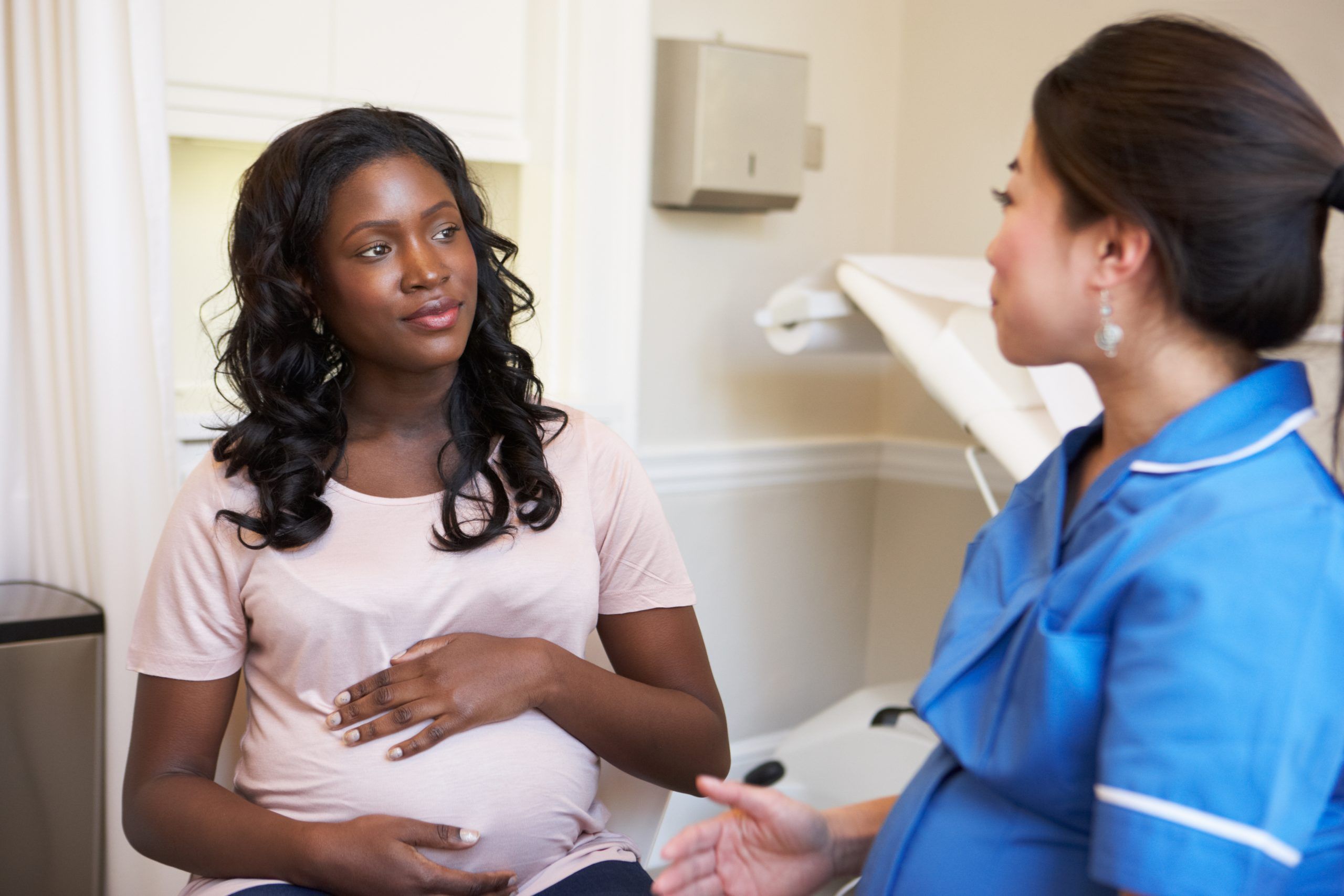X-Ray Tech – Minimizing Radiation Risk in Pregnant Patients

Radiation risk is greater for pregnant patients. Therefore, they should refrain from undergoing an X-ray examination unless it’s absolutely necessary. Pregnancy is a stressful yet very exciting phase in every woman’s life. A pregnant woman wants to be sure about taking good care of her child. The care includes maintaining healthy eating habits, keeping away from drugs, alcohol, etc. One major concern of every pregnant woman when getting an X-Ray is that the radiation could be harmful to the fetus.
Many studies have shown that radiation CAN cause harm to a developing embryo. However, according to FDA, it is far riskier to avoid getting an X-ray than the radiation harming the fetus. Read on to know more about the risks and what measures can be taken to minimize the same.
Sometimes it is Necessary to Conduct an X-ray on a Pregnant Patient.
Generally, doctors always ask the patients about their pregnancy status before recommending an X-ray examination. But technologists should also. If the technologist sees a risk, it’s important to double check with the physicians need to make sure they are informed and see if the exam is necessary. Most X-rays except for an abdominal X-ray are relatively safe to undergo during pregnancy. When the patient undergoes an X-Ray during pregnancy for arm, leg, head, spine, etc.; the primary beam doesn’t cross the abdominal area. Hence, it excludes the risk to a fetus or embryo in the development stage.
Does Radiation Exposure Involve a Risk to the Unborn Child?
Yes, X-rays pose a risk to the unborn child, but only when the fetus is exposed to high enough radiation levels. The impact of radiation on the developing fetus is largely based on the observations made in scientific studies. There are no published scientific experiments studying the impact of radiation on a fetus for ethical reasons. However, the impact has been observed in people who suffered the Hiroshima bombing and the nuclear power plant disaster in Chernobyl. The impact of these events was so significant that even 35 years later, children are born with genetic mutations and other issues.
The normal diagnostic X-rays (like dental, to determine an injury) and mammography are usually safe because they do not emit very high radiation levels, and should not expose the fetus to the primary beam. If a patient had high-level radiation X-rays or abdominal X-rays frequently before knowing about their pregnancy, it is a matter of concern. They should consult their doctor to examine the impact the radiation might have had on the fetus.
Why is it Necessary to Minimize the Radiation Risk on Pregnant Patients?
Exposing pregnant patients to harmful radiation could lead to complications, including genetic mutation, malformation, carcinogenesis, reduction in IQ, mental retardation, and a delay in the development of the fetus. The patient may also suffer a pregnancy loss if high radiation is received in the first two weeks of pregnancy.
In the developmental stage, the cells continue to divide and grow into specialized tissues rapidly. However, if exposed to high radiation, they may deform. On the other hand, Carcinogenesis is a stochastic effect of radiation, meaning that the chances of a child developing cancer are uncertain, but significantly increase with the increase in the radiation dose.
Further effects of radiation also depend upon the gestation age of the fetus. Radiation exposure is highly risky for the fetus during organogenesis until the end of the first trimester. Any level of radiation or successive X-rays can cause irreversible damage to the fetus during this period. However, the fetus gets resistant in the second and third trimesters and can possibly get exposed to radiation not more than 0.5 Gy according to some recommendations.
The range between 0.05 Gy to 0.5 Gy is relatively safe, but if the examination can be avoided, the physician should keep it on hold unless completely necessary. Exposure to radiation higher than 0.5 Gy may lead to adverse effects such as those mentioned previously. Therefore, physicians should counsel the patients and let them know the possible consequences of the radiation.
Ways to Minimize the Radiation Risk for Pregnant Women
Ask Questions
When you are ordered to perform an X-ray on a female of childbearing age, always ask her if she is or might be pregnant, and ask about her menstrual cycle. The practice will be helpful in deciding if the examination can be completely avoided. It is part of the standard protocol in most clinical settings to ask any female of reproductive age when their last menstrual period was. If it has been more than 10 to 14 days, the exam may be reconsidered.
An expecting parent has the right to ask as many questions as needed to get a clear picture of the consequences of radiation exposure. Consult the doctor to see if there is an alternative diagnostic technique that doesn’t require exposure to radiation. Experienced doctors will counsel the patients about the effects of radiation. However, you may still ask if the X-Ray, specifically the abdominal diagnostic, can wait until the child’s birth.
Share Information
Informing the ordering doctor about the patient’s pregnancy or menstrual cycle status is the best way to avoid an X-ray examination which may put a fetus at risk. Even if the patient is not sure about their pregnancy, discuss it with the physicians so they can review it. The patient should also be asked about any recent examinations they have had, so they do not repeat the test unnecessarily.
Lead Apron
Unless it interferes with the exam, it never hurts to place a lead apron over the patient’s abdominal area. The idea is to protect the unborn child and prevent radiation from hitting the uterus. But also to make the patient feel more comfortable and safe. The lead apron still allows exposure of the fetus to scatter but can reduce the exposure to radiation by 90% or more according to the International Energy Agency.
Avoid Pregnant Chaperones during an X-Ray
A pregnant person accompanying other patients to the X-Ray rooms is a big no. If a chaperone is required or desired, an alternative or proxy should be selected. If it’s absolutely necessary then the pregnant person should remain behind the protective barriers in the control area and only with the express authorization of administrators or physicians.
Ways of Risk Minimization for Pregnant Radiology Workers
Pregnant workers within the radiology department may also be at risk of being exposed to radiation. The dose limit for radiography and radiation workers who are pregnant is not more than 0.5 rem, which is 10% of the dose limit for normal workers.
Every country has laws to prevent workers from radiation exposure; however, the three basic solutions are:
- If the work area is safe, keep working in the same area, because the radiation exposure is insignificant
- If the work area has risk, move to another area with a reduced exposure risk
- Change work roles temporarily to a role where the exposure risk is zero.
Pregnant workers are not restricted from entering the X-Ray area. Still, the employers should strictly monitor and keep them under the dose limit by checking the pregnant worker’s examination history.
Mostly, pregnant workers prefer moving to another department or getting a temporary reassignment to mitigate the chances of radiation exposure.
Final Words
Human beings face minimal radiation on an everyday basis. For instance, while using the microwaves and at the airports while passing by the body sensor. Still, exposure to high-frequency radiation is a matter of concern, specifically for pregnant women. Fortunately, the diagnostic X-Rays use minimal radiation, and with cautious use, even women can get their X-Rays without worrying about causing any possible harm to the developing embryo. However, we strongly suggest avoiding radiation exposure as much as possible.
Visit here to know about radiologic technologist continuing education.
